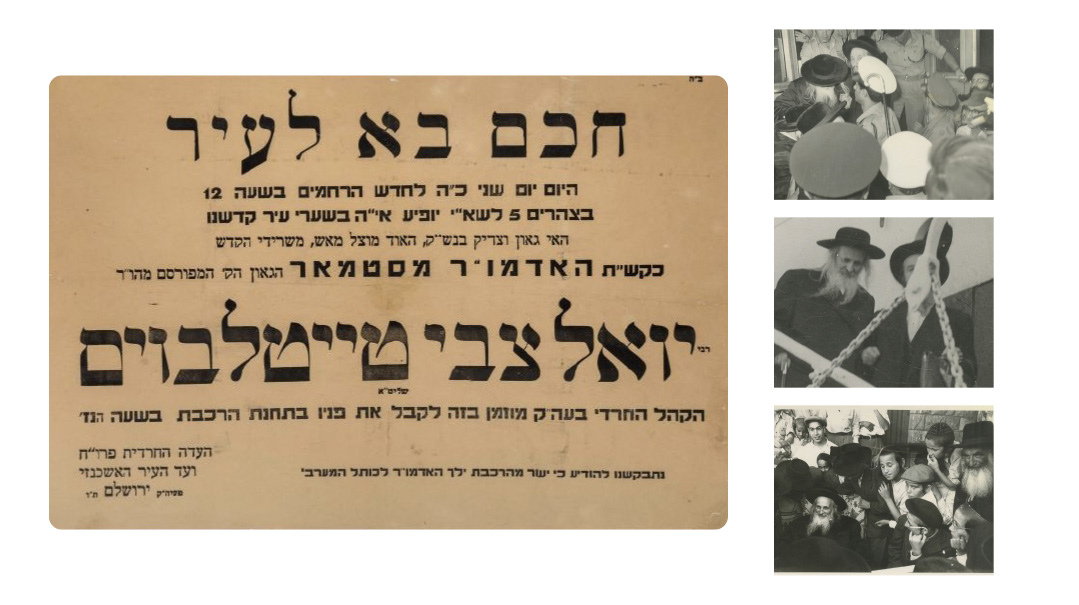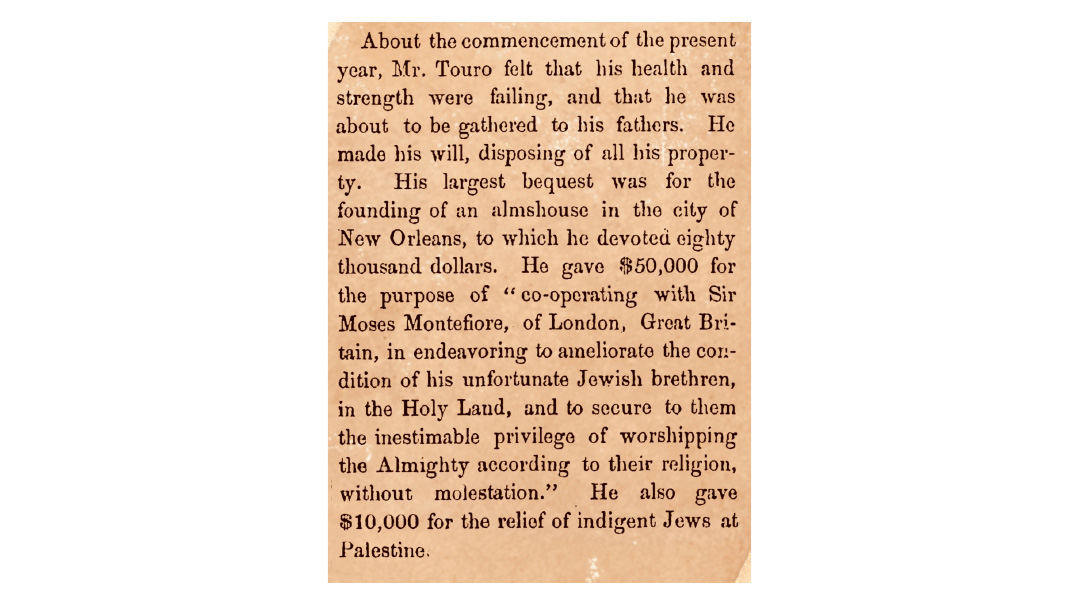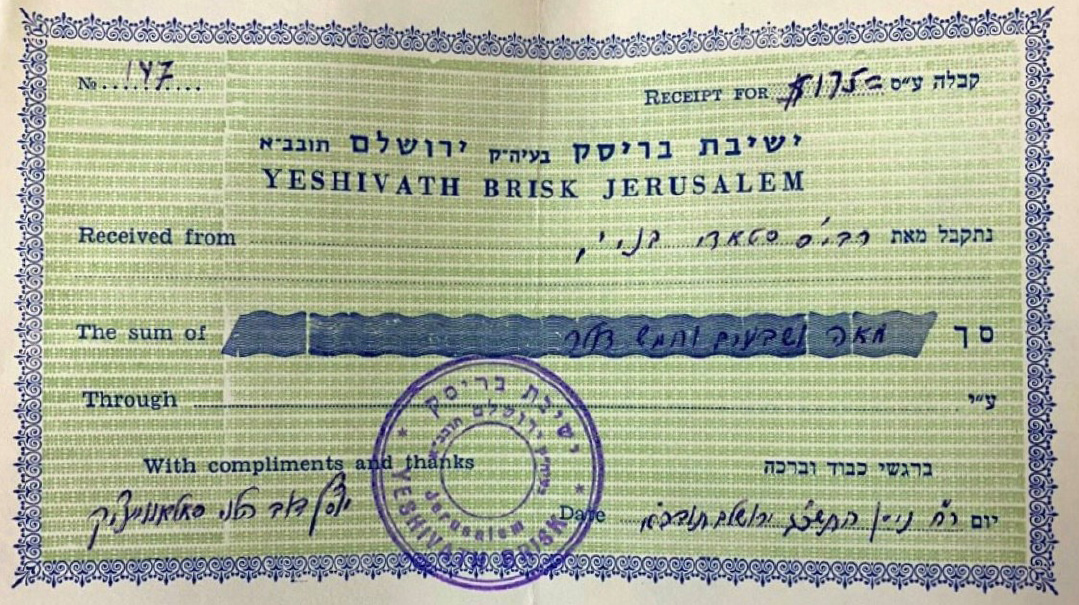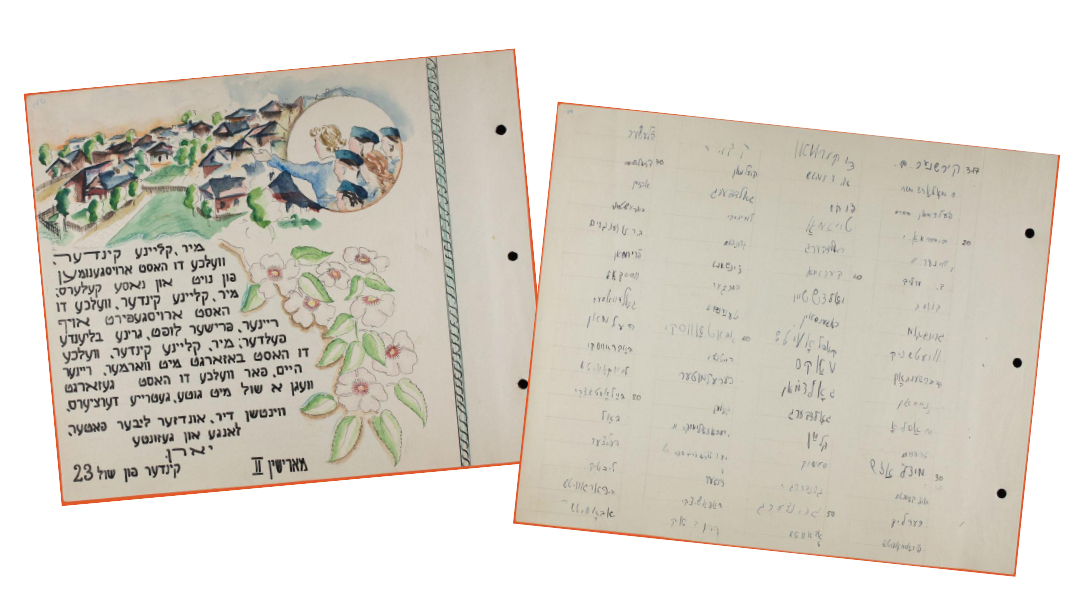Satmar on the way to Eretz Yisrael
| August 27, 2024For more than seven decades, Rav Yoel (Yoelish) Teitelbaum, the Satmar Rav, built and rebuilt again and again

Title: Satmar on the way to Eretz Yisrael
Location: Jerusalem
Document: Welcome poster
Time: September 1945
This article is dedicated in honor of the bar mitzvah of Ari Mandel, whose family displayed extraordinary mesirus nefesh on behalf of the Satmar Rebbe, forging a uniquely close relationship with him.
For more than seven decades, Rav Yoel (Yoelish) Teitelbaum (1887–1979), the Satmar Rav, served in various rabbinical leadership positions across three continents. As a rav, posek, rosh yeshivah, author, fatherly figure, leader, and polemicist, he was endowed with uncanny political savvy and motivated by a fiery energy and outspokenness, often taking iconoclastic positions on communal affairs.
Despite facing much personal tragedy throughout his long life and career, he built and rebuilt again and again, guiding his followers through some of the most challenging times in Jewish history, unfazed by setbacks and derision. His legacy and impact went far beyond the realm of his limited prewar community, or even his large postwar community, as his influence was felt in all corners of the Jewish world.
One fascinating aspect of his leadership was his longstanding relationship with Eretz Yisrael and its inhabitants. While his vocal, vociferous, and uncompromising opposition to Zionism and the State of Israel is well known and documented, his deep, personal connection to the land and its people stands in stark contrast to his ideological positions on the country’s political institutions. The Satmar Rav was the ultimate pragmatic leader, seeking the betterment of his followers in a very practical and down-to-earth fashion, and this included his activities on behalf of his followers in Eretz Yisrael.
With one prewar visit to Eretz Yisrael, an attempt to settle there permanently following the war, and four subsequent visits in the 1950s and ’60s amid great fanfare, he maintained a lifelong connection to the country’s affairs. Following the passing in 1932 of Rav Yosef Chaim Sonnenfeld, the legendary rav and founder of the Eidah Hachareidis, Rav Yoelish (then rabbi of Kroly, Romania) was considered a possible candidate as successor.
He made a preliminary trip that year, staying in a Tel Aviv hotel for a few days, and even went to the beach, before heading to Jerusalem. He davened at the Kosel a few times, went to Kever Rachel and Mearas Hamachpeilah in Chevron, then spent some time up north in Teveria, davening at kivrei tzaddikim in the Galilee, and spending several days in Meron. He distributed much needed funds to various orgaizations and needy individuals, established new institutions of his own, and even opened a new butcher shop with imported meats from Baghdad priced to assist the poor Jews of Jerusalem.
In a media interview he granted during his visit, he was asked about his position on the Agudas Yisrael political organization in Eretz Yisrael. He was known for his strident opposition to the local chapter in Hungary and Romania, but the Eidah Hachareidis and the Agudas Yisrael in Jerusalem were then under the same umbrella, with Rav Sonnenfeld having served as the leader of both organizations. The Satmar Rav responded wisely; he confirmed his uncompromising opposition to Agudas Yisrael in Europe, but clarified that the situation in Eretz Yisrael was different due to the Agudah’s affiliation with the Eidah Hachareidis.
Following the war, Rav Yoelish attempted to settle in Eretz Yisrael permanently. Prior to his departure from Switzerland in June 1945, he penned a letter to a relative of his in which he shared his future plans:
Perhaps it is a good idea to travel first to America for a short time prior to my moving to Eretz Yisrael, but I’m concerned about doing that. I have finally received an immigration certificate for entry to Eretz Yisrael, so if I don’t travel there now, who knows how many years will pass before I’m able to obtain another certificate of entry there. And to be stranded in America for a long period of time is most certainly not my desire.
He arrived in Eretz Yisrael in September 1945, and initially stayed with his daughter Roiza and son-in-law Rav Lipa at their Jerusalem residence. During the first months of his stay, he met with various local rabbis, davened at the Kosel, visited Kever Rachel and Mearas Hamachpeilah, and met with his followers. He established a yeshivah and an orphanage in Givat Shaul for refugee Holocaust survivors. To help these orphans find gainful employment, the Satmar Rav established several factories under his supervision: a brick factory and weaving mill in Givat Shaul, a shoe factory in Zichron Moshe, and an upholstery factory in the Meah Shearim shuk.
TO fund these institutions and his expanding community of followers, the Satmar Rav made an extended fundraising trip to Tel Aviv in February 1946, where he also met with the various chassidic rebbes then residing in Tel Aviv. In June 1946, he moved to Jerusalem’s Kiryat Moshe neighborhood, where he remained until his departure in September 1946. The financial burdens of his institutions became too great to bear, and a complex interplay of other factors led to the end of his sojourn in Eretz Yisrael.
It wasn’t long before he returned to the Holy Land, the first of four visits following the establishment of the State of Israel. In 1952, the Satmar Rav arrived by boat to Haifa on a visit arranged by the philanthropist Yisrael Zupnik, his close follower and supporter of the Eidah Hachareidis. The economic situation in the State of Israel in the early 1950s was then quite dire, and was known as the “period of austerity.” The Eidah Hachareidis and its institutions were particularly vulnerable and teetered at the point of bankruptcy.
The Satmar Rav brought with him about $100,000 cash for distribution to religious institutions, an astronomical sum for that time in Israel. He carefully distributed the funds to his own organizations, as well as to a slew of yeshivos and institutions committed to following his educational directives: using Yiddish as the language of instruction, not incorporating general studies into the curriculum, and seeking no funding from the State of Israel or its institutions.
At this time the Satmar Rav was appointed nasi (president) of the Eidah Hachareidis, overseeing the distribution of its funds. The relatively large infusion of foreign money undoubtedly boosted the country’s struggling economy at the time.
The Satmar Rav also invested in building communities for his own chassidim in Israel. The main Satmar shul on Rechov Yoel was built in 1951–54, and his wife Rebbetzin Alteh Feiga helped establish the Bnos Yerushalayim Satmar girl’s schools. Additional Satmar institutions were constructed in the Geula neighborhood.
His most creative initiative at this time was establishing an entire Satmar neighborhood in Bnei Brak, far from Jerusalem’s Old Yishuv. The city was then a hodge-podge of secular Israeli, religious Zionist, and Agudas Yisrael–affiliated chareidim, whom the Satmar Rav opposed. He sought to build an enclave for his followers, most of whom were Hungarian Holocaust survivors, and whose well-being, housing, employment and future were very close to his heart.
To get the project off the ground, the Satmar Rav worked closely with Chaim Moshe Shapira, the Mizrachi interior minister (and student of Rav Shimon Shkop in Grodno), to obtain the necessary licenses and approval. Israel’s Ministry of Labor, the Jewish Agency, and private donations provided funding for the purchase of the real estate and construction of the neighborhood. In 1959 the first buildings were completed, and the residents began to move in.
This was an entire neighborhood whose bylaws were personally written by the Satmar Rav, whose institutions complied with his ideology, and whose residents signed a contract to comply with the neighborhood rules as a precondition for receiving the financial subsidy to purchase an apartment there.
ANopulent reception for the Satmar Rav was prepared in anticipation of his next visit to Israel in the summer of 1955. The immediate catalyst of his visit was the Knesset and municipal elections to be held that year. Most rabbis in Israel openly encouraged participation, and Agudas Yisrael was attempting to garner a larger share of the vote. In light of his vocal opposition to any form of political participation, the Satmar Rav felt that a visit during this time give encouragement to those who followed his ideology. He took the opportunity to express his vehement opposition in public forums.
Despite the Satmar Rav’s public utterances, longtime Agudah MK Shlomo Lorincz recalled that his opposition to municipal elections was not as strong as that to national Knesset elections. This was due to his nuanced ideological understanding of the Shalosh Shevuos, the three oaths Hashem demanded of Klal Yisrael that are alluded to in Shir Hashirim Rabbah, and his opinion that establishment of a Jewish state prior to the arrival of Mashiach was strictly forbidden. The stringency of that prohibition did not apply to municipal elections.
In their campaign pitches, Agudas Yisrael publicized the view of the Satmar Rav that municipal elections aren’t as forbidden as national elections. The extremist Neturei Karta faction disagreed with the Satmar Rav on this point, and held that it was a grave prohibition to participate in municipal elections as well, and ripped down the posters as a result.
When the Satmar Rav heard about this, he remarked, “In America and elsewhere, people ask me to advise them and bring me money. Here in Yerushalayim, they take money from me and give me advice.”
On his next visit in 1959, the Satmar Rav was greeted with a ceremonial welcome at the port of Haifa. The Eidah Hachareidis rented a special train to transport him, his entourage, and hundreds of well-wishers accompanying him on the festive journey to Jerusalem.
By then, the State of Israel was a well-established reality. Agudas Yisrael’s participation in the government was a foregone conclusion, and a Torah society was beginning to flourish in the face of the state’s secularism. The Satmar Rav therefore moderated his public pronouncements, and generally tried to stay away from ideological polemics. Instead, he focused this trip on his efforts to improve the financial solvency of Satmar institutions, the fledgling neighborhood in Bnei Brak, and the institutions of the Eidah Hachareidis.
In the latter realm, he participated in the groundbreaking ceremony of the new Eidah Hachareidis headquarters right behind Meah Shearim, sponsored by Yisrael Zupnik. In addition to meeting with a wide array of rabbanim during his visit, the Satmar Rav also met with Rav Yaakov Moshe Toledano, the Mizrachi minister of religious affairs.
IFone wanted to gauge the Satmar Rav’s success and popularity in Eretz Yisrael, it was on full display for his final visit in 1965. From the grand reception at the port of Haifa, to the special train chartered to transport him and his entourage to Jerusalem, to closing off several streets for a festive reception, it was a sight to behold.
Hundreds of followers and students of his institutions waved flags to greet him in the packed streets of Jerusalem. In the height of irony, the Eidah Hachareidis arranged for Israel police officers to accompany the entourage on horseback. This time, the Satmar Rav was accompanied by a group of wealthy followers from the United States, and he and his company distributed upwards of a half million Israeli liras to the Satmar and Eidah Hachareidis institutions throughout the country.
This was to be his final visit to Eretz Yisrael. In February 1968, the Satmar Rav sustained a debilitating stroke, and was unable to endure international travel for the remainder of his life. But his deep connection to Eretz Yisrael remains and flourishes to this day through his large community, many institutions, and widespread influence.
This article utilized the research and writings of Dr. Menachem Keren-Kratz, Rav Shlomo Lorincz and Rabbi Chaim Moshe Stauber.
The 45th yahrtzeit of Rav Yoel Teitelbaum, the Satmar Rav, is Friday, 26 Av.
Dovi Safier is a business professional who enjoys researching unexplored chapters of Jewish history, with a primary focus on the yeshivos of the interwar period.
Yehuda Geberer is a historian and tour guide of Jewish historical sites in Europe and Israel, and is the host of the Jewish History Soundbites podcast.
(Originally featured in Mishpacha, Issue 1026)
Oops! We could not locate your form.






